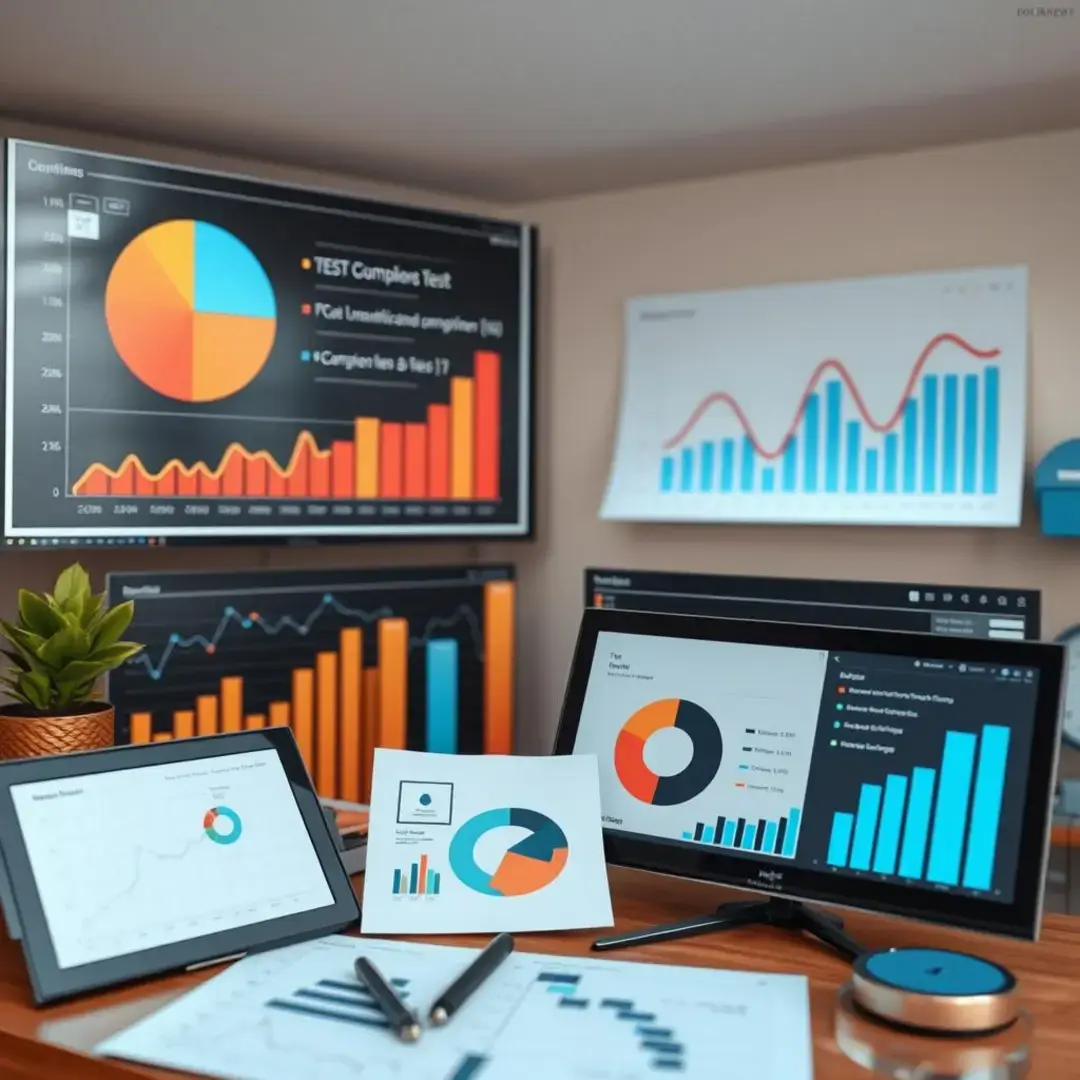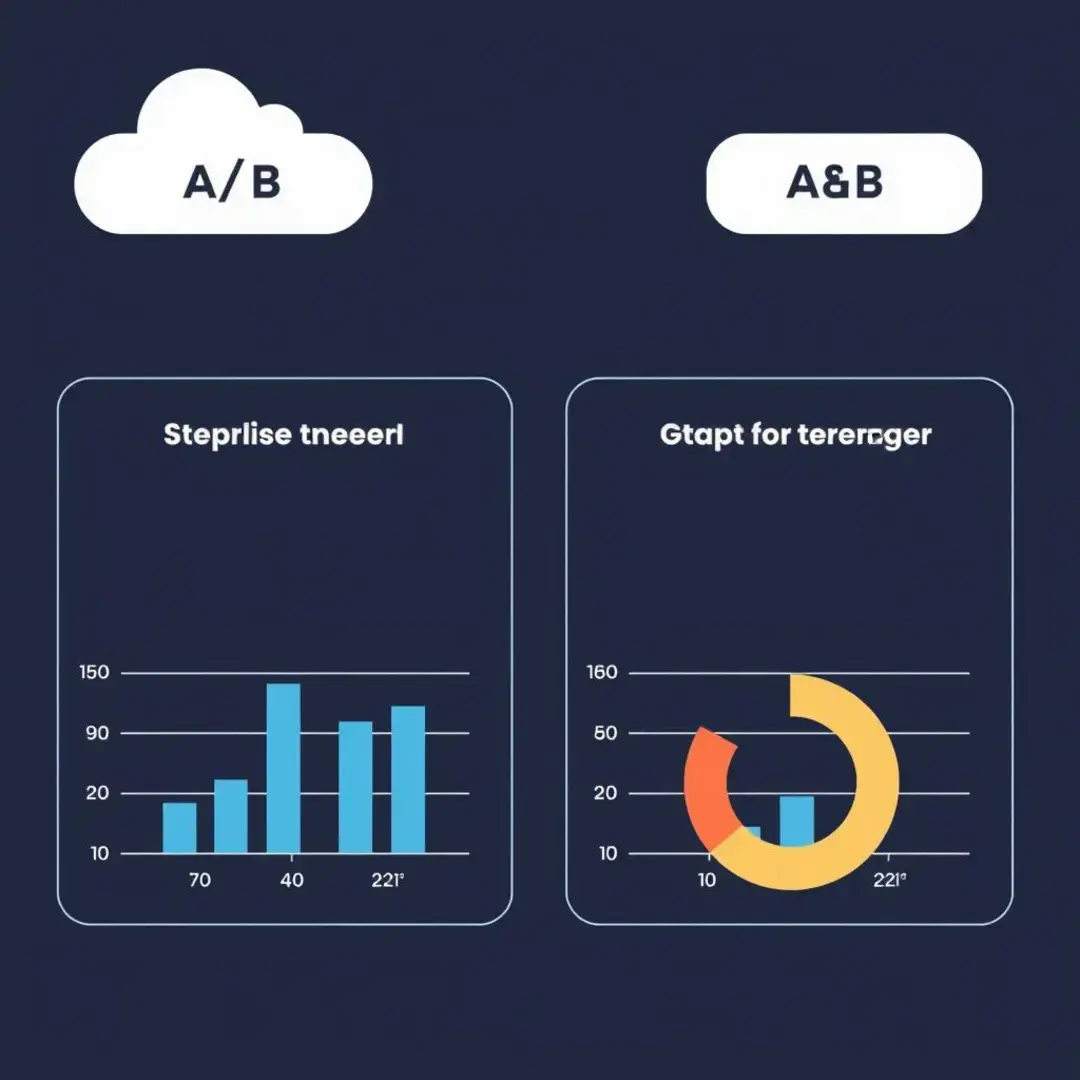A/B Testing: Optimizing Decision-Making
Understanding Advanced A/B Testing Concepts

Beyond the Basics: Statistical Significance and Power Analysis
A/B testing is a cornerstone of data-driven decision-making, but understanding statistical significance and power analysis is essential to truly harness its potential. Statistical significance helps determine whether the results observed are likely due to chance or if they indicate a true effect of the changes made. This aids businesses in making informed decisions rather than guesses, enhancing the optimization process. However, many fall into common pitfalls when interpreting these results.
One frequent mistake is over-relying on p-values without considering the context of the test. A result can be statistically significant but practically irrelevant, leading to ill-informed decisions. Therefore, a comprehensive approach, combining statistical significance with real-world implications, is crucial. Always evaluate how these findings fit into broader business goals before moving forward.
Alongside significance, understanding statistical power is critical. Power analysis assesses the likelihood of detecting an effect when there is one, guiding businesses on how large a sample size is necessary for reliable outcomes. A study with low power may yield false negatives, leading teams to mistakenly conclude that changes had no effect. Thus, considering power before running tests can help ensure that results are both robust and meaningful.
Employing advanced statistical methods can provide deeper insights. Techniques like Bayesian analysis or regression modeling enhance traditional A/B testing frameworks by accounting for variability and prior information. This not only improves understanding but also allows for more nuanced interpretations of user behavior. As statistical tools evolve, so should the approaches businesses employ to stay ahead—harnessing data to make informed, strategic decisions.
Multivariate Testing vs. A/B Testing: When to Use Which
While A/B testing compares two distinct versions of a webpage or app element, multivariate testing analyzes multiple variables simultaneously. This can be particularly beneficial for complex scenarios where several elements might influence user engagement. Understanding the differences between these two techniques allows teams to choose the right method depending on their objectives and the intricacy of the variables at play.
Multivariate testing breaks down multiple components into combinations to see which variations perform better collectively. The benefits of this approach include identifying not just the most influential elements but also how they interact. As a result, this deeper understanding can lead to optimized user experiences that outperform simple A/B tests. However, it demands a more extensive data set and careful planning to execute effectively.
Your choice between A/B testing and multivariate testing heavily relies on your specific goals. If understanding individual element performance is critical, A/B testing suffices. On the other hand, multivariate methods are ideal when interactions between elements significantly affect user behavior. Thus, clarity in goals sets the foundation for effective optimization strategies.
Interpreting multivariate test results involves scrutinizing how each element interacts with others. A robust analysis can unveil trends and synergies that improve conversion rates. Yet, this complexity means employing strong analytical tools and expertise is vital for drawing actionable insights that inform strategic decisions. As brands navigate these waters, a thorough post-test analysis will inevitably lead to smarter, data-driven adaptations.
Designing Effective A/B Tests for Complex Scenarios

Targeting Specific User Segments for Personalized Experiences
One of the most effective strategies in A/B testing involves targeting specific user segments. This approach allows businesses to cater experiences to diverse user needs, which can dramatically enhance conversion rates. By identifying key segments within your user base, you can create specific variations tailored to resonate deeply with each group, making tests more pertinent and impactful.
To effectively target these segments, start by analyzing user data to understand behaviors, preferences, and demographics. Using tools like customer surveys or behavioral analytics helps in creating rich profiles of user segments. Once you recognize distinct patterns, these insights can inform the design of tailored experiments that genuinely meet user needs, resulting in a more personalized experience.
Creating multiple versions of a page or product tailored to different segments can enhance user engagement significantly. Consider not just text but also visuals, calls-to-action, and layouts that might resonate better with each group. This tailored approach can lead to improved outcomes, as users are more likely to engage with content designed specifically for them. Testing these variations provides valuable insights into user preferences.
Ultimately, the impact of personalization can be substantial. By measuring how these targeted variations perform against standard offerings, businesses can determine if their segment-based strategies yield better conversion rates. Continuous analysis will allow for real-time adjustments to strategies, ensuring that marketing efforts align with user expectations, turning potential leads into loyal customers.
Testing Complex Interactions and Dependencies
Understanding interactions between various elements in an A/B test is crucial. Complex interactions can significantly influence user outcomes, but they are often overlooked. Properly designed tests that account for these interactions can reveal intricate details that simple testing methods might miss. Consequently, insights drawn from them can drive substantial improvements in design and marketing strategies.
Interaction effects occur when the effect of one variable depends on the level of another variable—this is key to unlocking deeper insights. For example, a call-to-action might work differently depending on the imagery used or the wording of surrounding text. Recognizing and testing these interactions means your tests can be more comprehensive and informative, ultimately leading to optimized outcomes.
Isolating these effects requires diligent test planning. For effective measurement, consider employing factorial designs that allow for testing multiple factors and their interactions simultaneously. Clearly defining hypotheses related to these interactions will aid in aligning testing strategies with expected user behavior. This meticulous approach will lead to a more accurate understanding of the dynamics affecting conversions.
Post-testing analysis of complex interactions involves advanced techniques such as regression analysis or machine learning approaches. This strength will help uncover trends and correlations not apparent in standard analyses. A deeper understanding of how these interactions work together can lead to actionable insights, making way for well-informed decisions that enhance user experience and drive growth.
Analyzing and Interpreting A/B Test Results Like a Pro

Beyond Simple Conversion Rates: Analyzing User Behavior
To interpret A/B test results effectively, it’s crucial to look beyond mere conversion rates. Analyzing user behavior offers a window into how users interact with variations and where they may lose interest. Metrics such as time spent on page, click patterns, and user engagement levels are invaluable for understanding the story behind the data.
Tools like heatmaps and scroll maps illustrate where users are clicking and how far they scroll down a page. This visual representation can reveal engaging areas as well as content that may be overlooked. By linking this data with A/B test outcomes, marketers can derive insights about the effectiveness of design elements. Utilizing these tools ensures that optimization efforts are deeply informed by actual user behavior, enhancing the chances of success.
User flow analysis sheds light on how visitors navigate through your site after interacting with a test variation. Understanding the paths they take, or where they drop off, is fundamental in optimizing the user experience. This data can inform subsequent tests and needed adjustments. By continuously refining these pathways, businesses can drive users toward desired actions more seamlessly.
Segmenting users according to their behavior allows for a more granular analysis of A/B test results. Different segments may respond distinctly to variations for multiple reasons, including preferences and past experiences. By identifying these distinctions, marketers can tailor future A/B tests to fit specific behaviors and demographics, leading to more effective strategies and resources.
Troubleshooting Inconclusive or Unexpected Results
Inconclusive or unexpected results can be frustrating for teams running A/B tests. It’s vital to troubleshoot potential sources of confusion—like biases affecting outcomes or errors made during implementation. Re-evaluating testing methodologies and ensuring robust procedures can prevent being sidetracked by anomalies in data, allowing for a clearer path toward optimally driving conversion.
Understanding how biases and errors arise is the first step toward resolving issues. Various sources of bias, such as selection bias or seasonal trends, can skew results and lead to misleading conclusions. By addressing these factors in the analysis phase, teams can better interpret results accurately. Identifying these sources will fortify future tests, ensuring rigorous testing and analysis.
A comprehensive review of test designs is essential for troubleshooting. Strive to ensure every aspect, from user targeting to variation setup, is executed with precision. Even seemingly minor errors can have rippling effects on outcomes, skewing essential insights. Taking the time to review and adjust designs as necessary can transform future tests and ensure comprehensive learning.
Incorporating qualitative data can provide context to unexpected results. Engaging users for feedback can reveal insights about their experiences, motivations, and pain points, enriching the quantitative data collected during tests. This qualitative perspective can help explain why a variation did not perform as anticipated, thus allowing teams to pivot quickly and make informed decisions for future experiments.
Scaling A/B Testing for Continuous Improvement

Building a Culture of Experimentation Within Your Organization
To harness A/B testing’s full potential, cultivate a culture of experimentation throughout your organization. When teams collectively embrace testing and discovery, innovation thrives, as everyone understands the importance of data in decision-making. This shift promotes an environment where taking calculated risks becomes the norm, fostering adaptability and responsiveness to users’ needs.
Embedding A/B testing into the development lifecycle ensures that experimentation is part of the routine rather than an afterthought. Encouraging developers, marketers, and product teams to collaborate on test designs can streamline processes and enhance coherence across strategies. This integration will lead to more effective campaigns and improved user experiences by aligning objectives across departments.
Collaboration is vital in executing successful A/B tests. It encourages knowledge sharing between departments, creating a holistic view of testing processes and insights. When teams can work together harmoniously, they enhance the quality of hypotheses and findings, leading to better decision-making. This synergy between marketing, development, and analytics will ultimately yield optimization strategies that resonate with users.
Communication of A/B testing results is key to nurturing a culture of experimentation. Sharing insights with the entire organization ensures learning is shared and future tests benefit from accumulated knowledge. Crafting detailed yet accessible reports can inform team members across different departments, enabling them to contribute to subsequent iterations. This transparency propels an environment of continuous improvement and innovation.
Automating A/B Testing Workflows for Increased Efficiency
automation can significantly enhance A/B testing workflows, making them more efficient and less prone to human errors. Implementing tools and platforms designed for automated testing can facilitate quicker iteration cycles, allowing teams to focus on analysis rather than administration. This transition not only speeds up processes but ensures that your testing strategy remains aligned with business goals and user expectations.
Countless tools simplify the setup and monitoring of A/B tests, with numerous features designed to streamline the entire process. Utilizing these platforms allows for easier segmentation, tracking, and reporting. Many tools come with advanced analytics capabilities that provide real-time insights, empowering teams to adapt quickly and make informed decisions. Harnessing these resources will inevitably sharpen your testing strategies and lead to improved outcomes.
Your analytics stack must seamlessly integrate with A/B testing efforts to maximize efficiencies. Establishing strong connections between testing platforms and analytics tools means that data flows effortlessly, leading to deeper insights. This holistic view of user data enhances understanding and helps shape better testing strategies. Ultimately, this integration results in data-informed decisions that resonate with audience expectations.
The ability to monitor and manage numerous tests concurrently is vital for savvy marketers and product teams. By maintaining an organized approach to test management, you’ll prevent overlapping variations that might impact results and muddle insights. Leveraging tools that allow this simultaneous monitoring can ensure clarity and structure, driving efficiency across projects. This vigilance not only safeguards data integrity but also allows for finely-tuned adjustments across the board.











